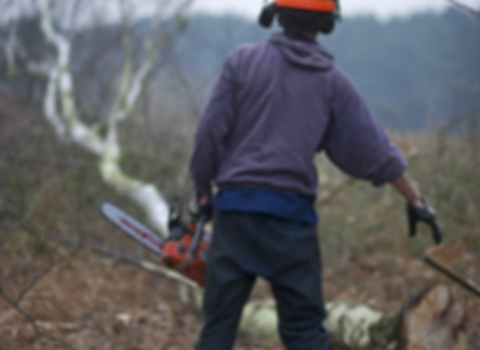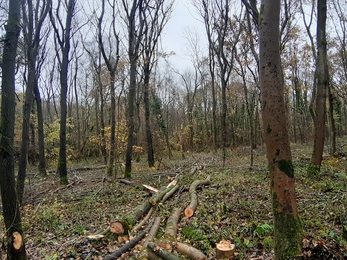Traditionally, woodlands were managed using low impact techniques such as felling by hand and moving wood with horses. This way of working is not always economical or sustainable and so sometimes machinery may be used to provide the required woodland management.
Whilst the use of machinery can cause disturbance, not managing our woodlands to provide the right conditions would be more damaging to the wildlife that lives there. We also take many precautions to minimise the disturbance caused by machinery.
Before any work commences, areas are checked for sensitive wildlife, and workers are made aware of places to avoid. Tree felling takes place outside of the bird nesting season and potential bat roosts are marked and left alone. Dedicated routes for moving machinery are also used to minimise disturbance to the soil, and any deep rutting is repaired before work is finished.
In order to sustainably manage our woodlands for people and wildlife in the long term, it is necessary to cover the costs of management. Timber generated from management is sometimes sold and money is reinvested in our woodland nature reserves. As a charity, we do not make a profit from selling timber or biomass. The money that is brought in pays for the tree felling itself, as well as a range of activities such as improving access and signs, tree planting, tools and equipment, as well as other habitat management work that comes at a cost.
A proportion of the wood can also be left as standing and fallen dead wood, which provides habitats to a range of wildlife, including birds, fungi, bats and insects. The dead wood further decays over a longer time period to provide the soils of the future.
Woodland management we have previously carried out has been planned in woodland management plans and felling licenses have been approved by the Forestry Commission (the statutory body responsible for authorising this kind of work). These plans were created with the advice of the Forestry Commission and Natural England and with the help of woodland management consultants. They detail the different types of management (including tree felling selection) to be carried out throughout the woodland for the benefit of people and wildlife.
Some paths may have to be closed temporarily, whilst we complete our woodland management work, as it cannot be done safely without the exclusion of people. Workers operating machines may have limited visibility and trees being processed have the potential to fall on unaware pedestrians (or their dogs). We apologise for any short-term inconvenience and try to make sure there are alternative routes available.



